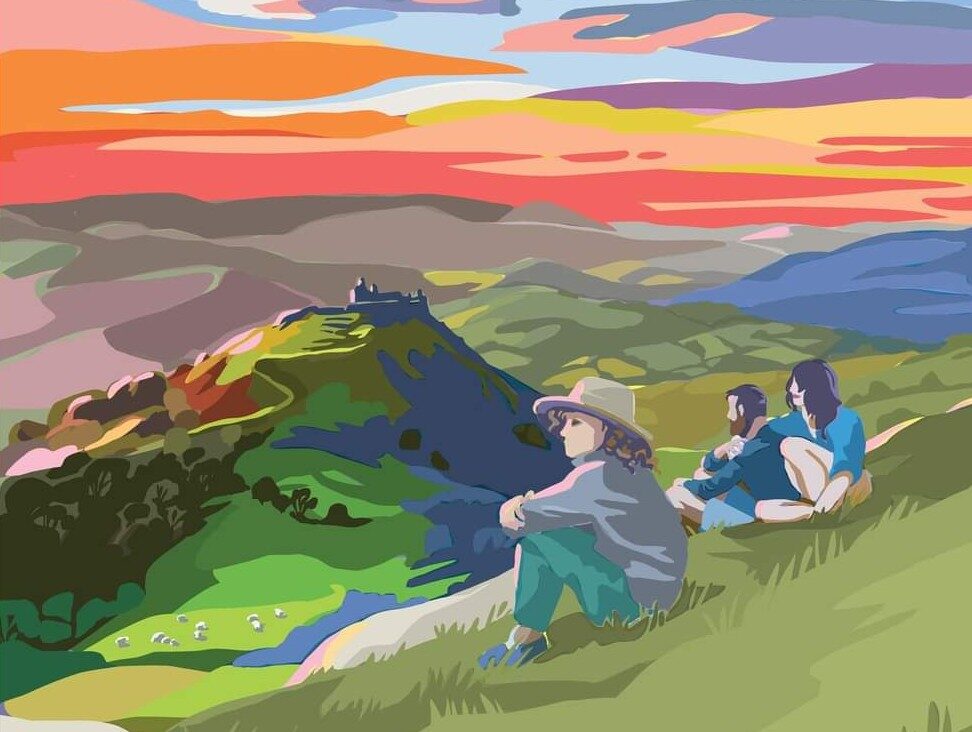Project Background
-

-

-

-

-
 Volunteers weeding out Himalayan Balsam
Volunteers weeding out Himalayan Balsam
Our Picturesque Landscape Partnership Scheme background
The Our Picturesque Landscape is a partnership project developed by the Clwydian Range and Dee Valley Area of Outstanding Natural Beauty, Pontcysyllte Aqueduct and Canal World Heritage Site, Wrexham County Borough Council, Denbighshire County Council, The Canal and River Trust, Shropshire Council, Natural Resources Wales, Cadw, Cadwyn Clwyd, Aqueducks (Friends of the World Heritage Site) and the Friends of the Clwydian Range and Dee Valley. All partners are represented on a project steering group and are actively engaged in the development of the project.
The Project is a £2-million-pound scheme over 5 years supported by the National Lottery Heritage Fund. It started in November 2018 and is due to finish in 2023.
Early Tourists
The story perhaps starts in 1771 when Sir Watkin Williams Wynn, influenced by his earlier grand tours of Europe, set out on one of the first domestic excursions around his estates of North Wales, accompanied by artist Paul Sandby. Sandby published XII views of North Wales and Sir Watkin commissioned two views of Dinas Brân from Richard Wilson, revealing a most picturesque and sublime landscape. Other artists and commentators followed.
Around the same time the Ladies of Llangollen, Eleanor Butler and Sarah Ponsonby, from their home at Plas Newydd were establishing the Dee Valley as a centre for picturesque appreciation. They were great champions of the romantic, and society became fascinated by their lives. They played host to numerous visitors, particularly writers including William Wordsworth and Anna Seward.
Many of the original paintings have been reproduced by artists following in the footsteps of the early landscape painters. JMW Turner in particular visited the Dee Valley a number of times and depicted the River Dee at Corwen and Valle Crucis and Castell Dinas Brân.
Illustrated books of the area include “Wanderings and Excursions in north Wales” (1836) by Thomas Roscoe, which includes a painting of Valle Crucis. Henry Gastineau produced “Wales Illustrated” in 1830-31 including paintings of Dinas Brân, Valle Crucis and the Llangollen area. George Borrow also included the Dee Valley on his tour of Wales in the 1830s.
Great engineering structures at the time such as the Pontcysyllte Aqueduct, the Horseshoe Falls and the Chainbridge also seemed to have an eye for the aesthetic indicating that grand engineering advances could take their place in the landscape and complement nature.
By the early and mid-19th century the popularisation of the landscape of the Dee Valley combined with other factors begin to establish them in our consciousness as iconic landscapes. The A5 and the railway became tourist routes, bringing visitors to north Wales in numbers and putting Llangollen and Corwen even more on the excursion map.
Project themes
These themes of the Our Picturesque Landscape project – People and the Picturesque, Accessing the Picturesque and Conserving the Picturesque – have been worked up through extensive stakeholder and community consultation and reflect the aspirations of the communities that live, work and visit the Dee Valley.
These themes also identify that this is a landscape under extreme pressure with high numbers of visitors drawn to what are often our most fragile sites. The communities on its doorstep, born from the industrial endeavours that shaped it, are now less connected to the benefits the landscape offers. The project will invest in the resilience of key visitor sites and engage communities in its appreciation and management while reinterpreting this rich landscape for a new generation.
Related
Our Picturesque Landscape

Our Picturesque Landscape Project is funded by the National Lottery Heritage Fund















